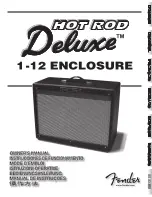
−
−
30
−
−
8-7 BRUSH
The brushes must be smooth where they
contact the slip rings. If not, polish smooth
the brushes with sandpaper. A brush that is
not smooth produces arcs between the brush
and slip ring leading to possible damage.
Usable brush lengths are from 5 mm to 15
mm (0.2 " to 0.6").
A brush shorter than 5 mm must be replaced
because decreased contact pressure
between the brush and slip ring lowers gen-
erator efficiency and output voltage.
15 to 5 mm
(0.6" to 0.2")
BRUSH
BRUSH
HOLDER
8-8 A.V.R
(AUTOMATIC VOLTAGE REGULATOR)
1) Features
This AVR operates to control the field current
in order to maintain the output voltage for the
AC current, which generated by the magnetic
flux by the field coil.
2) A.V.R. trouble may be identified by simply
looking at the A.V.R., or by the inter-lead
resistance with a tester, or actually mount-
ing it in the generator and operating it.
2
4
1
3
Terminal number
of the A.V.R.
Yellow
(a) A.V.R. TROUBLE IDENTIFICATION by APPEARANCE
If an A.V.R. electronic part is burnt dark, or the surface epoxy resin melted, it often indi-
cates A.V.R. trouble.
(b) IDENTIFYING A.V.R. TROUBLE by CHECKING INTER-LEAD RESISTANCE
Check the inter-lead resistance of the A.V.R. with a tester, referring to the following table.
If the tester readings very greatly from the values specified in the table on next page, the
A.V.R. is faulty.
NOTE : Take teater inaccuracy into account in reading the tester.
(c) IDENTIFYING A.V.R. TROUBLE by MOUNTING and OPERATING in THE GENERATOR
SCR or transistor damage cannot be detected by simply looking at the A.V.R. or checking
the lead resistance. Check it by mounting the suspectedly faulty A.V.R. in a normal gener-
ator, or mount a mormal A.V.R. in a generator which fails to generate voltage.
















































